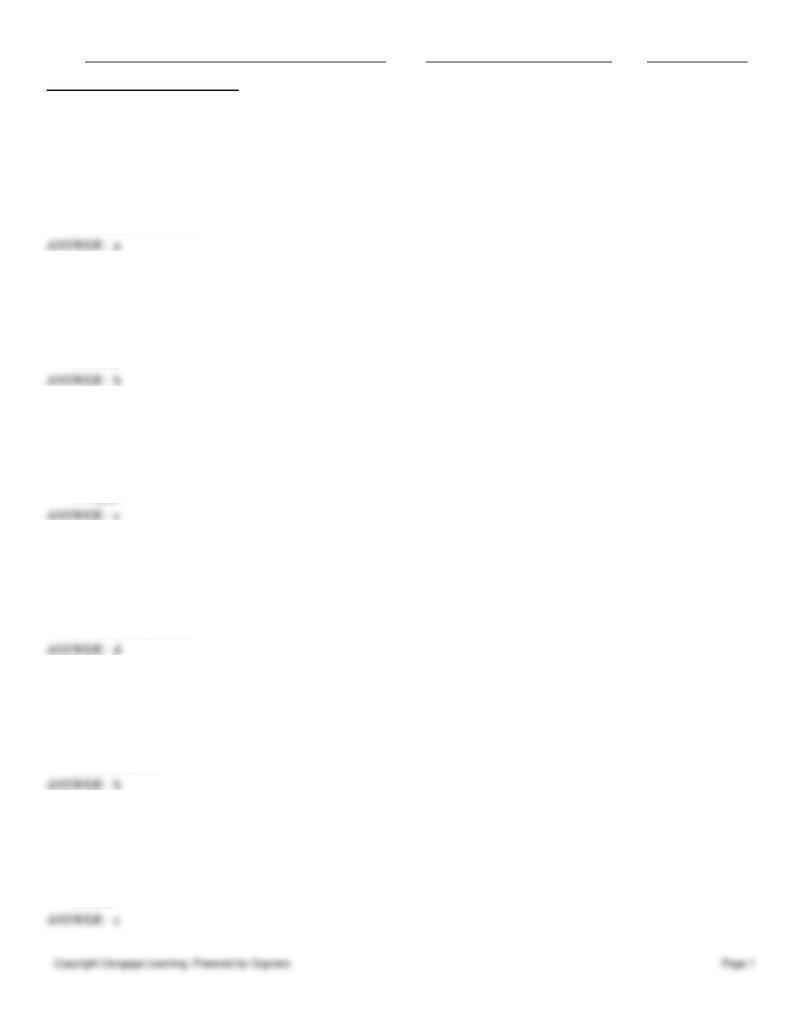
Name:
Class:
Date:
Chapter 05: The Islamic World
Multiple Choice
1. A characteristic feature of the prayer hall at the mosque, or Mezquita, at Córdoba is the _____.
a.
horseshoe-shaped arches
b.
tiled columns
c.
elaborate carpets
d.
fountain of the lions
2. The _____ is the hall in the mosque reserved for the ruler.
a.
qibla
b.
maqsura
c.
minaret
d.
iswan
3. Islam arose in _____ in the seventh century.
a.
Jerusalem
b.
Turkey
c.
Arabia
d.
Egypt
4. The _____ was the first great Islamic building.
a.
Malwiya minaret
b.
Friday Mosque
c.
Court of the Lions
d.
Dome of the Rock
5. What are you unlikely to find in the decoration of a mosque?
a.
Calligraphy
b.
Narrative scenes
c.
Abstract patterns
d.
Floral motifs
6. Muslims are called to pray from the _____.
a.
maqsura
b.
mihrab
c.
minaret
d.
kufic
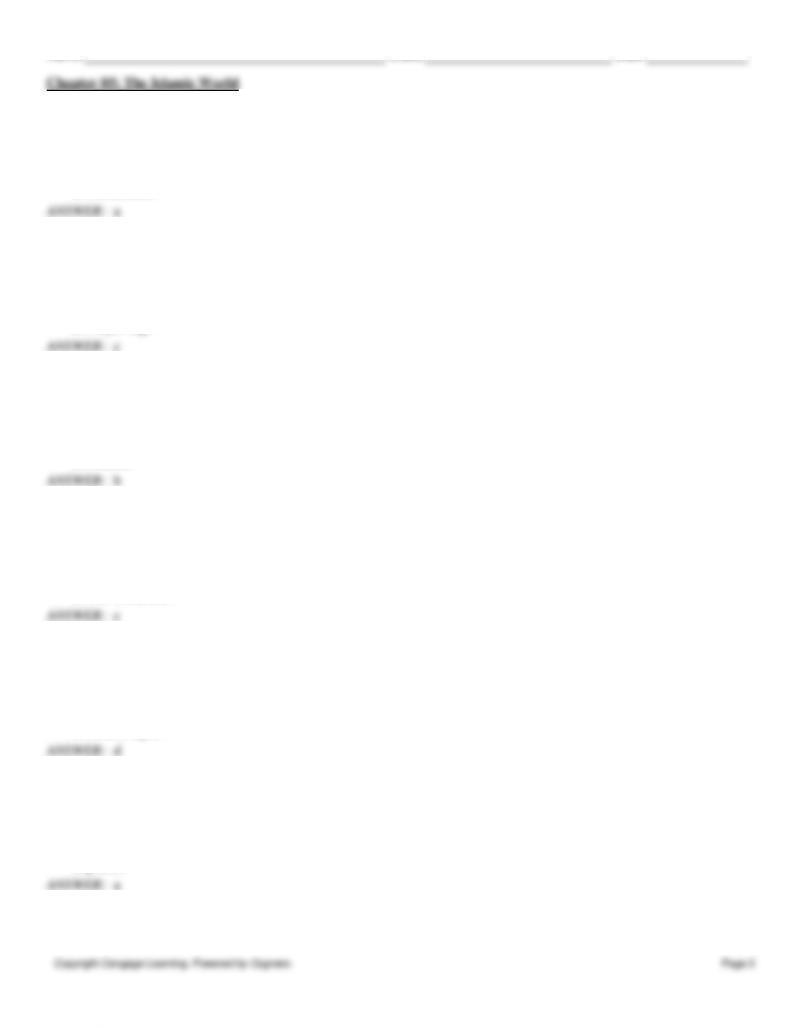
Name:
Class:
Date:
7. The Umayyad caliph, _____, was the patron of the Dome of the Rock.
a.
Abd al-Malik
b.
Abd al-Rahman III
c.
Shah Tahmasp
d.
Ibn Zamrak
8. In what type of art will you find narrative images with human figures?
a.
Mosaic tilework
b.
Mosque lamps
c.
Secular books
d.
Prayer rugs
9. When Muhammad returned to Mecca he preserved the _____ as the center of the Islamic world.
a.
maqsura
b.
kaaba
c.
iwan
d.
minaret
10. Islam’s sacred book is the _____.
a.
Gospel book
b.
Torah
c.
Koran
d.
Old Testament
11. Islam does not consider Muhammad to be divine but rather as the _____.
a.
successor of Jesus
b.
messiah
c.
Trinity
d.
Final Prophet
12. Following Muhammad’s practice, Islamic leaders, or _____, were secular and religious leaders.
a.
caliphs
b.
patriarchs
c.
bishops
d.
priests
13. The most important buildings in the Islamic world were _____.
a.
palaces
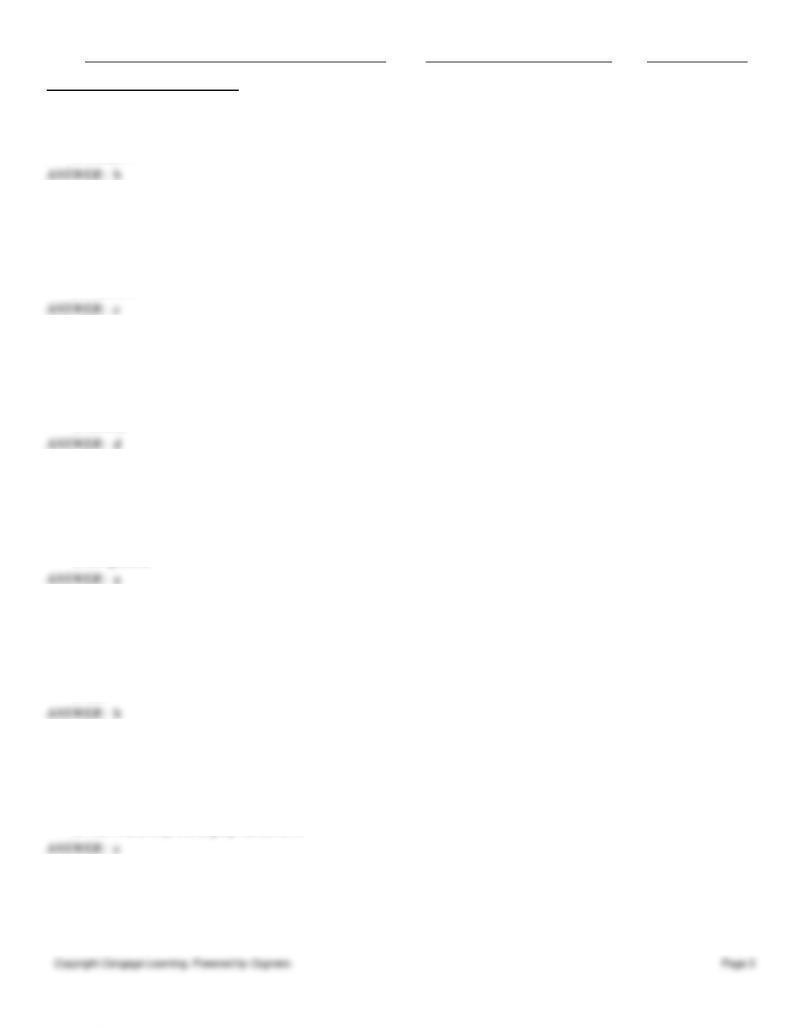
Name:
Class:
Date:
Chapter 05: The Islamic World
b.
mosques
c.
law courts
d.
theaters
14. A mosque’s _____ resembled Muhammad’s house in Medina.
a.
iwan
b.
mihrab
c.
hypostyle hall
d.
madrasa
15. The _____ may honor where Muhammad stood while leading worship.
a.
qibla
b.
minaret
c.
iwan
d.
mihrab
16. The minaret of the Kairouan mosque resembles _____.
a.
a Roman lighthouse
b.
a ziggurat
c.
a Greek temple
d.
an apadana
17. The distinctive feature of the Malwiya minaret is its _____.
a.
bulbous dome
b.
stepped spiral ramp
c.
calligraphy decoration
d.
tile
18. What was the purpose of the Malwiya minaret?
a.
It resembled ancient ziggurats.
b.
It was a sacred burial place.
c.
It announced the presence of Islam in the Tigris Valley.
d.
The whole city could pray inside of it.
19. _____ founded the Spanish Umayyad dynasty after fleeing from the Abbasid massacre of his clan.
a.
Ibn Zamrak
b.
Muhammad V
c.
Genghis Khan
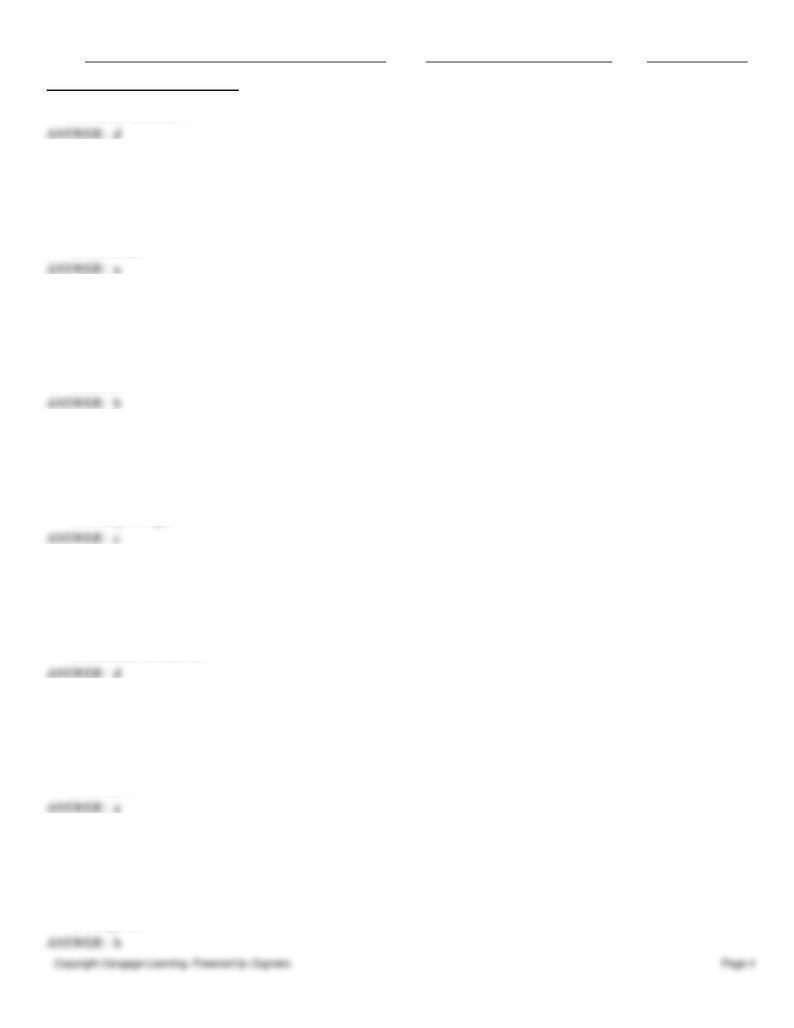
Name:
Class:
Date:
Chapter 05: The Islamic World
d.
Abd al-Rahman I
20. _____ was the capital of the Spanish Umayyad dynasty.
a.
Córdoba
b.
Mshatta
c.
Samarra
d.
Kairouan
21. An experimentation with _____ contributed to the intricacy of the dome in the Mezquita at Córdoba.
a.
calligraphy
b.
multilobed arches
c.
tile techniques
d.
murals
22. The _____ is a huge place fortress constructed by the Nasrids in Granada.
a.
Dome of the Rock
b.
Kaaba
c.
Alhambra
d.
Friday Mosque
23. The muqarnas dome in the Palace of the Lions symbolized _____.
a.
the Five Pillars
b.
Mecca
c.
Muhammad’s birthplace
d.
the dome of Heaven
24. The Friday Mosque is the earliest example of a _____ mosque.
a.
four-iwan
b.
muqarna
c.
Byzantine
d.
minaret
25. The most difficult tilework technique is called _____.
a.
calligraphy
b.
mosaic tilework
c.
kufic
d.
muqarnic
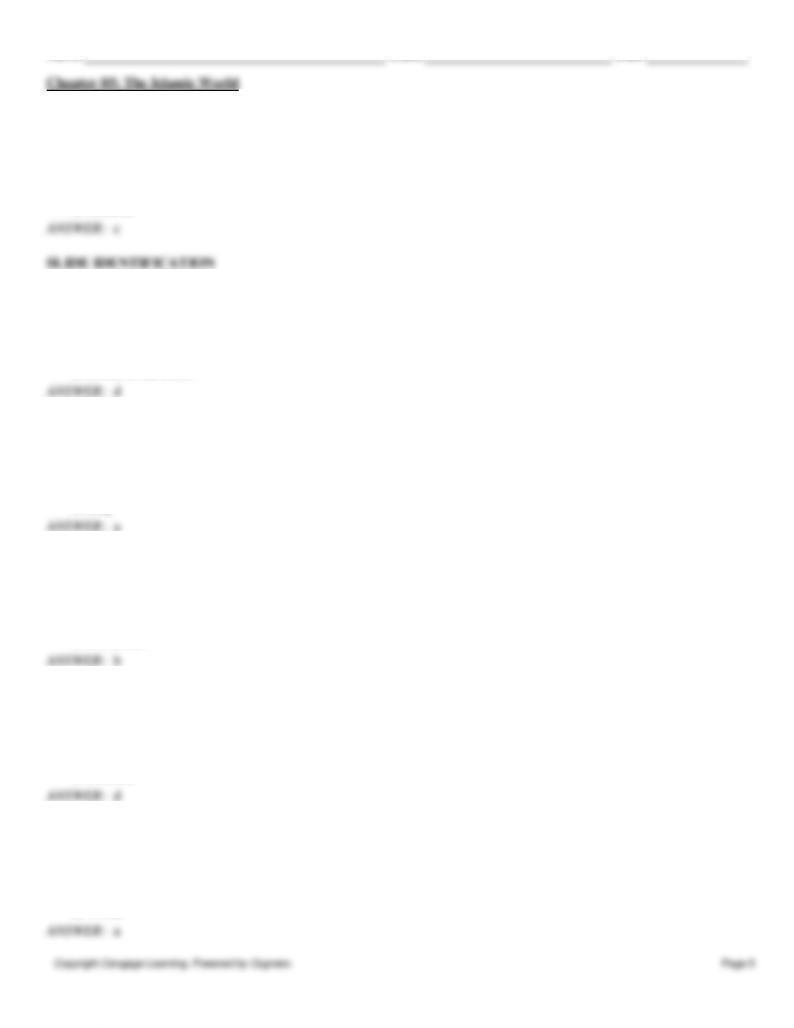
Name:
Class:
Date:
26. _____ became a leading center for the production of luxurious books under the patronage of Timurid.
a.
Isfahan
b.
Samarra
c.
Herat
d.
Mshatta
27. (Figure 5–2)
a.
Great Mosque, Kairouan
b.
Shahi (Imam) Mosque
c.
Palace at Granada
d.
Dome of the Rock
28. (Figure 5-7)
a.
Spain
b.
Iran
c.
Turkey
d.
Iraq
29. (Figure 5-5)
a.
Istanbul
b.
Samarra
c.
Baghdad
d.
Damascus
30. (Figure 5-9)
a.
Córdoba
b.
Tunisia
c.
Cairo
d.
Granada
31. (Figure 5-12)
a.
Tile
b.
Brick
c.
Stucco
d.
Wood
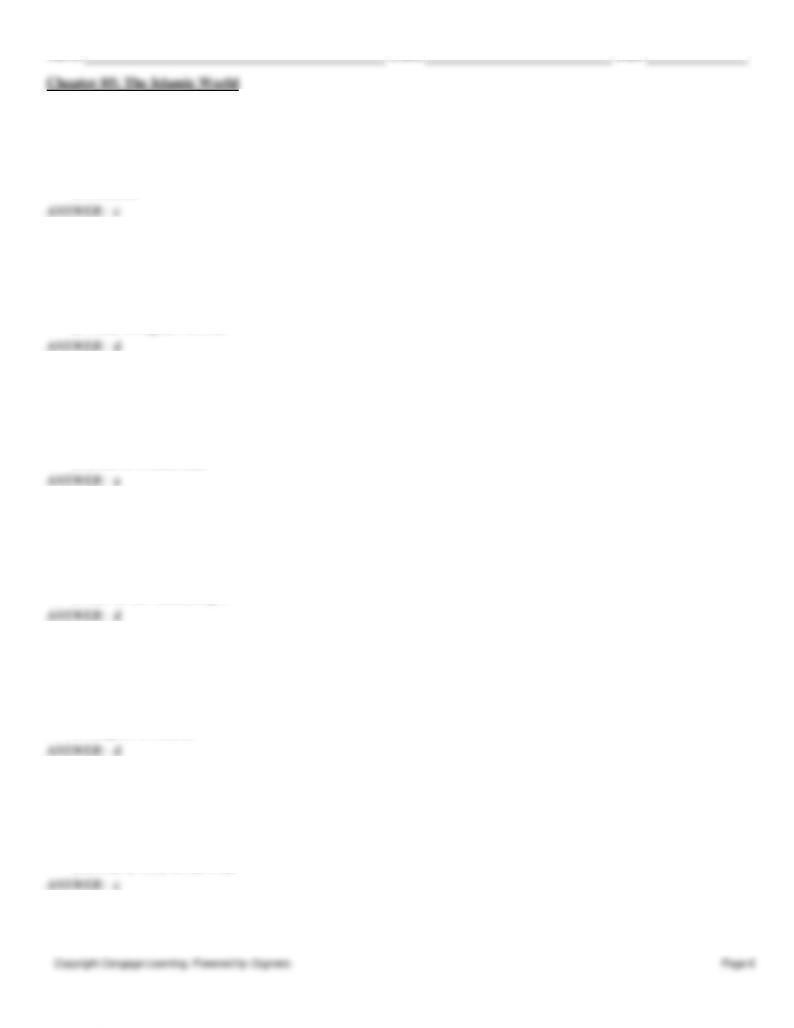
Name:
Class:
Date:
32. (Figure 5–11)
a.
Kairouan
b.
Damascus
c.
Isfahan
d.
Córdoba
33. (Figure 5–7)
a.
Great Mosque, Kairouan
b.
Great Mosque, Damascus
c.
Great Mosque, Isfahan
d.
Great Mosque, Córdoba
34. (Figure 5-13)
a.
Koran page
b.
Book of Maqsud of Kashan
c.
Biography of Abd al-Malik
d.
Book of Muhammad
35. (Figure 5-10)
a.
Hall of the Lions
b.
Prayer Hall at Córdoba
c.
Hall of the Hidden Garden
d.
Hall of the Abencerrajes
36. (Figure 5-15)
a.
Abd al-Malik
b.
Muhammad V
c.
Ibn Zamrak
d.
Maqsud of Kashan
37. (Figure 5-8)
a.
Dome in front of the minaret
b.
Dome in front of the muqarna
c.
Dome in front of the mihrab
d.
Dome in front of the iwan
38. (Figure 5-13)
a.
Kufic script
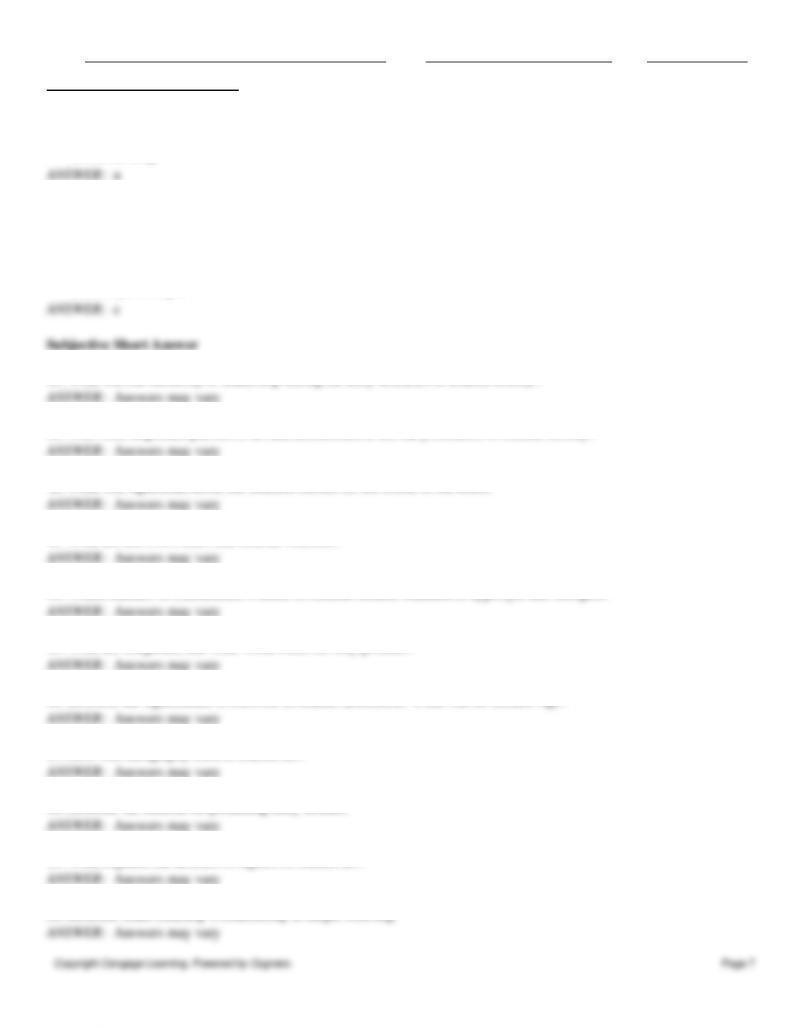
Name:
Class:
Date:
Chapter 05: The Islamic World
b.
Abbasid script
c.
Seljuk script
d.
Nasrid script
39. (Figure 5-7)
a.
Peripteral mosque
b.
Pseudoperipteral mosque
c.
Hypostyle mosque
d.
Peristyle mosque
40. What was the hierarchy of leadership during the early centuries of Islamic history?
41. Who were important patrons of art and architecture in the early centuries of Islamic history?
42. What was significant about the location chosen for the Dome of the Rock?
43. What are the Five Pillars that bind all Muslims?
44. Which features of Muhammad’s house in Medina became standard in hypostyle hall mosques?
45. What are muqarnas, and what visual effect do they produce?
46. Describe the significance of tilework in Islamic decoration. When was its Golden Age?
47. How was calligraphy used in Islamic art?
48. Describe the method for producing early Korans.
49. What explains the absence of figures in Islamic art?
50. Describe Shah Tahmasp’s relationship to carpet weaving.
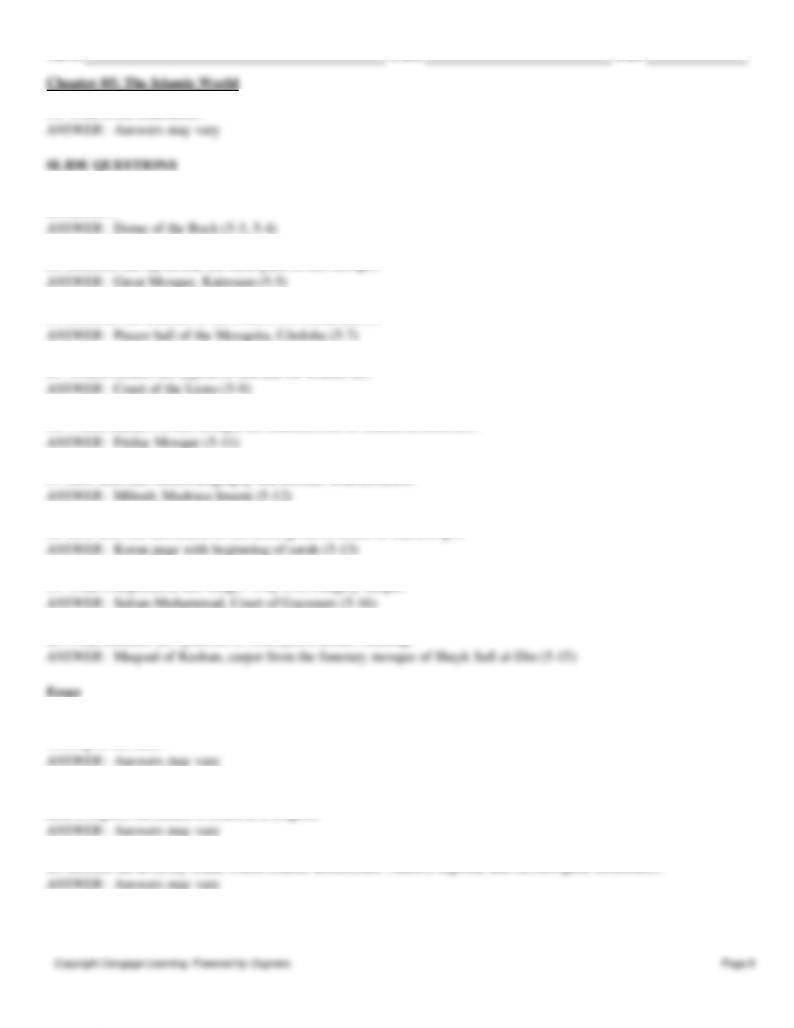
Name:
Class:
Date:
51. What is the Shahnama?
52. Which elements of this monument’s construction and decoration are borrowed from Late Roman and Byzantine
architecture?
53. Describe the layout and the basic parts of this mosque.
54. Describe the function of this room’s two-tiered arches.
55. Which features are typical or unusual for Islamic art?
56. Which features of this mosque are characteristic of Iranian architecture?
57. How does this blend calligraphy and abstract ornamentation?
58. How does the decoration of this correspond to medieval manuscripts?
59. What is depicted in this image? Why is its imagery unique?
60. What elements are symbolic or conveyed a certain meaning?
61. Discuss the development of the mosque, and identify its significant architectural traits. How does it relate to the
worship of the faith?
62. Explain how calligraphy functioned as an art form, both as the written word and pure decoration and pattern. How
does it express the nature of Islam as a religion?
63. Discuss the diversity found within Islamic architecture. Address regional and chronological differences.
64. Describe the content or subject matter of Islamic art. What decorative forms were the most common? Which art form
permitted narrative or figurative art?
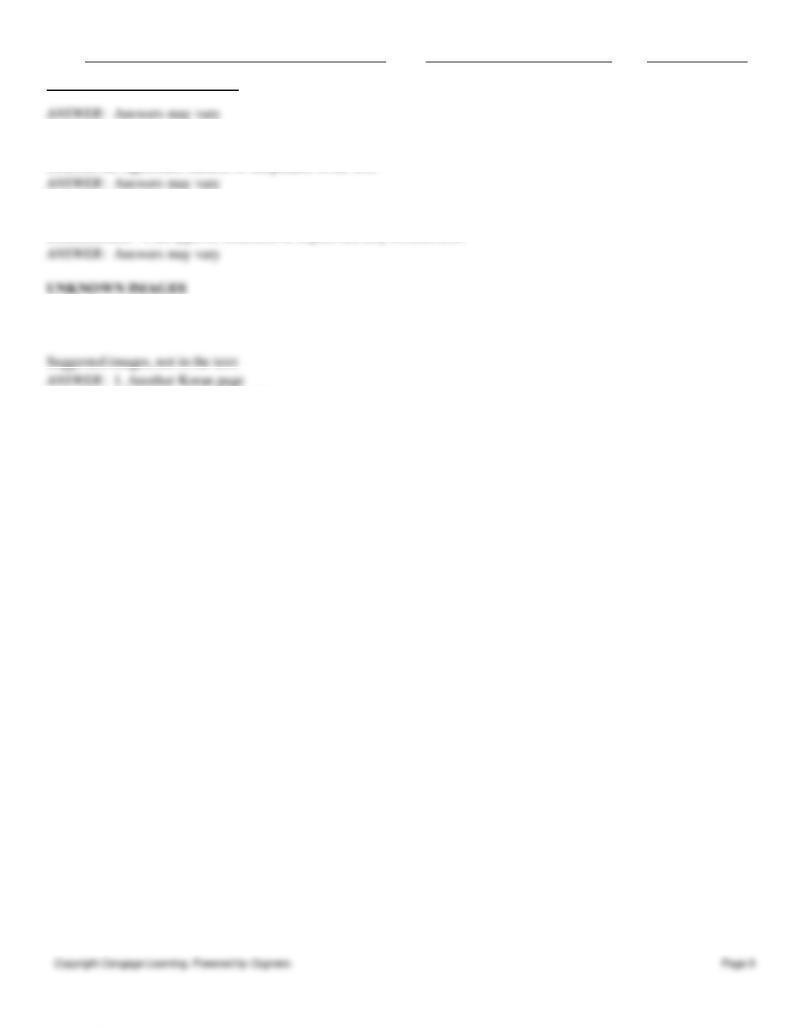
Name:
Class:
Date:
Chapter 05: The Islamic World
65. Islamic leaders not only commissioned mosques and artworks of religious significance, but also grand palaces.
Describe the significant features of the palaces in the text.
66. Who were the major patrons of Islamic art and architecture? What statement was made through the artworks they
commissioned? What types of structures or objects did they commission?
67. Attribute the images on the screen to a culture and give an approximate date. Give the reasons for your attributions,
using complete sentences and referring to specific works discussed in class.
2. Another mosque from Persia
3. Another tile mihrab showing a Kufic inscription
4. Another textile, possibly another carpet
5. Another palace, possibly another view from the Alhambra